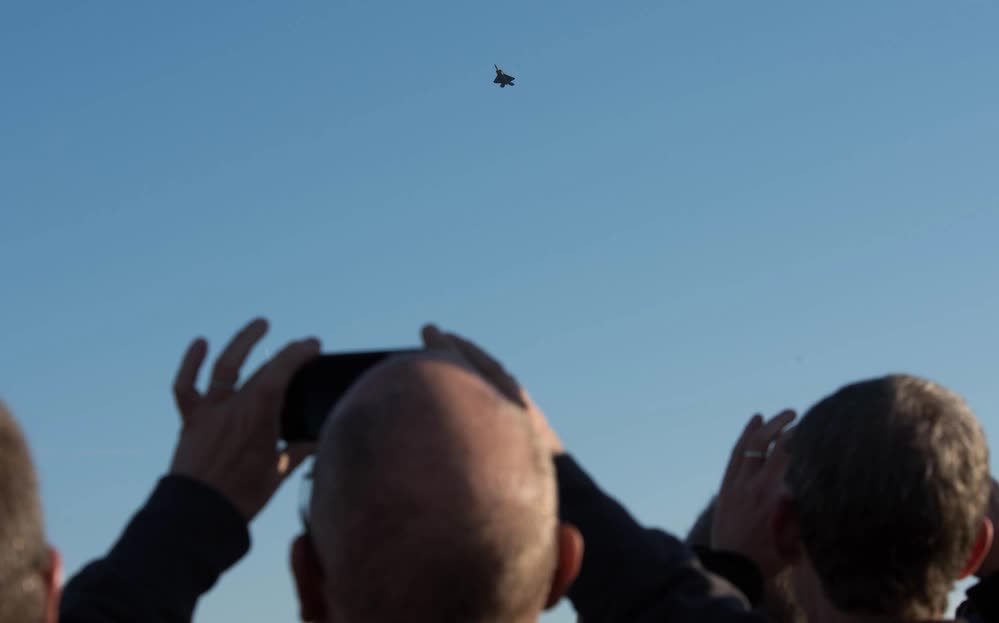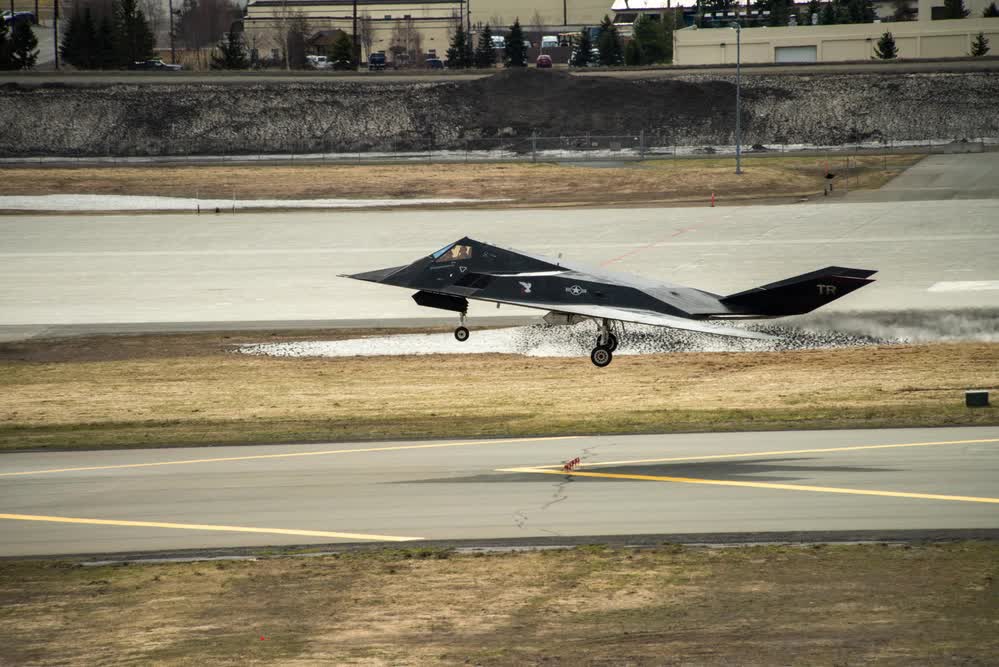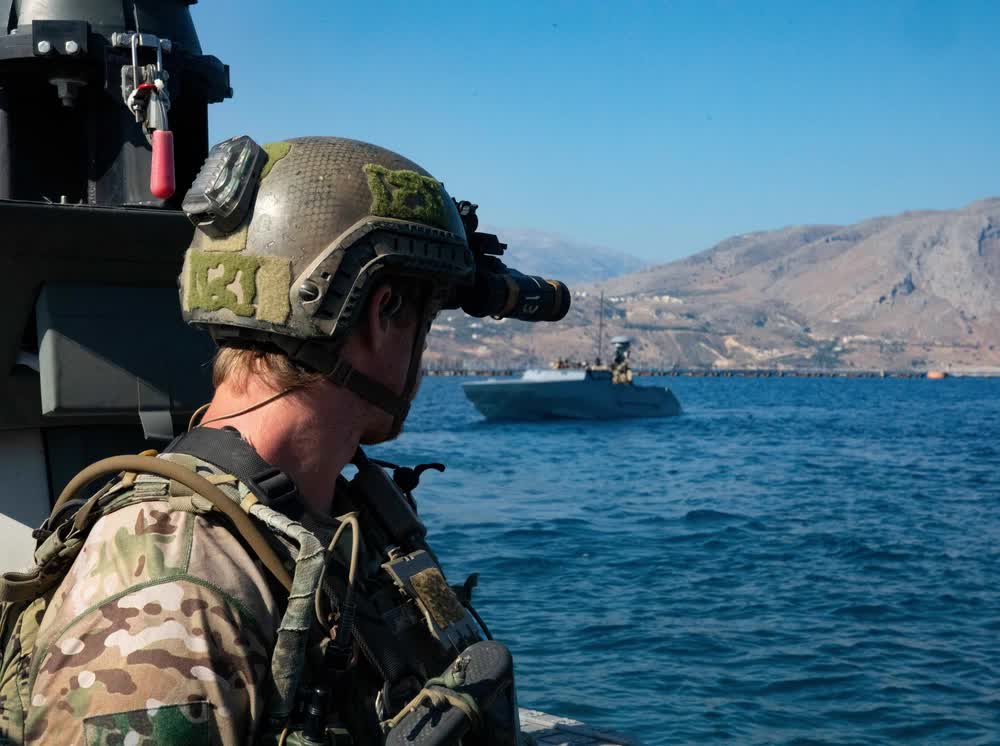Marine Corps is ready to bring the sting to enemy aircraft and drones
- By Coffee or Die
Share This Article

This article by Carl Prine was originally published by Coffee or Die.
When Maj. Crispus M. Kimani commissioned into the Marine Corps a decade ago, his service was still waging twin counterinsurgency wars in Iraq and Afghanistan.
Low Altitude Air Defense officers were facing guerrilla foes with no air forces, and the Corps didn’t consider killing enemy jets, helicopters, and aerial drones its top mission.
The Corps deactivated 1st Stinger Battery in Okinawa, divested its Avenger weapons system, and stalled the Light Armored Vehicle-Air Defense Program, while dragooning LAAD Marines to become riflemen supporting U.S. forces overseas.
“Essentially, we were doing air base ground security, security at airfields, doing patrols, just standard provisional infantry stuff tailored to OEF,” the operations officer at 3rd LAAD Battalion in California told Coffee or Die Magazine.

But the rise of Russia and China and the Pentagon’s pivot toward Asia changed all that. By 2014, the Corps was scrambling to find ways to defeat increasingly cheaper and more lethal unmanned aerial systems launched not only by Moscow and Beijing, but Iran’s Revolutionary Guard.
And then in 2019, Gen. David H. Berger became the 38th commandant of the Marine Corps. But the career infantryman wasn’t thinking so much about his grunts as he was those who help the rifle companies get their jobs done by controlling space and cyberspace, the sky, and the ocean.
Berger’s Force Design 2030 became his call for the Corps to modernize its forces for battle against peer and near-peer foes, with an emphasis on what his blueprint called “shortfalls.”
He urged the Pentagon to procure better expeditionary long-range precision fires; more medium- to long-range air defense systems; new high-endurance, long-range unmanned systems that can jam enemy communications or fire missiles at them; and a phalanx of robust short-range, point defense, anti-air systems for Kimani and other commanders to snatch the air back from future enemies.
And that’s happening quickly in Berger’s Marine Corps.
Related: Marine Corps’ elite MARSOC operators have been getting ready for the future

On Nov. 18, the 3rd Marine Aircraft Wing activated Charlie Battery, a signal of the Corps’ increasing investment in ground-based air defense. When it fills out, it’ll have more than 160 Marines and sailors, about the same size as a reinforced rifle company but with their eyes on the skies.
They’ll be armed with the same shoulder-fired FIM-92 Stinger homing surface-to-air missiles they have now, plus a pair of new killers: the Marine Air Defense Integrated System — called MADIS — and its less beefy cousin, the Light Marine Air Defense Integrated System, or LMADIS.
MADIS comes in two varieties — Mk. 1 and Mk. 2 — and they’re transported in Joint Light Tactical Vehicles.
Marines call the Mk. 1 their “kinetic kill” version because it fires salvos of Stinger missiles from its turret, bringing down everything from fast jets to helicopters.
Like the Mk. 1, the Mk. 2 system also has a 30mm cannon, electronic jammers, and infrared electro-optical viewers to find and pulverize targets, but the Marines call it “nonkinetic” because it’s designed for downing unmanned aircraft.
Related: The Marine Corps has a weapon maintenance problem

Similar to MADIS Mk. 2, LMADIS slays unmanned aircraft by zapping the radio frequencies connecting a drone to its controller.
But it doesn’t weigh as much as MADIS, which makes it easy to load on nimble dune buggies, like the Polaris MRZRs, or ferry to the battlefield by Marine helicopters and tiltrotor aircraft.
LMADIS is being fielded by Marine units now, and its designers insist it can detect an aerial robot from a long distance and pinpoint its location to troops nearby or commanders in the rear.
And if the Marines need a little more punch, they still can unleash their shoulder-fired Stingers on the enemy.
“I have an app for that,” Kimani said. “I have LMADIS capability or a dismounted counter-UAS capability to defeat that threat.”
Related: 4 unique combination weapons that failed (and 1 that became great)

“Right now, we’re in a really good position as a community,” Kimani continued. “And we have really good problems to have in a lot of us here are pretty thankful for the opportunity to get new equipment, to get this level of visibility, to get a chance to show how our MOS and how our community will positively influence the fight of the future.
“But with all this new tech, we just can’t forget that a lot of this is going to be focused on the gunner on the ground, making those decisions at a fast pace,” he said. “So I applaud the junior Marines who are getting into this community, and those who are going to be getting into it in the future, because their knowledge set is definitely going be tested. And then their capability is going to be tested. But time and time again, Marines have proven that they can integrate new technologies, and I have nothing but optimism that they’ll be able to do so in the future.”
The Corps hopes to have MADIS and LMADIS in the hands of all its anti-air battalions by 2030, just in time for the next tool in the anti-air kit to arrive.

That’s the Medium-Range Intercept Capability, or MRIC.
Similar to Israel’s Iron Dome system, MRIC uses Tamir missiles to hammer long-range cruise missiles before they reach U.S. troops.
On June 30, 2022, the Marines successfully test-fired a prototype of the system at White Sands Missile Range in New Mexico.
To Kimani, young Marines entering the anti-air defense battalions are arriving during exciting times.
Much like the M142 High Mobility Artillery Rocket System revolutionized field artillery and became its own military occupational specialty, MRIC could carve out a whole new career field for Marines, too.
And Kimani sees other weapons streaming into the battalions in the coming years.
They’ll be systems loaded with active and passive sensors that constantly scan the skies for anything that moves, and can plug into artificial intelligence to help a Marine gunner react even faster to incoming aircraft and ballistic missiles.
“Nothing is really set in stone with this piece. We know that there are technologies out there that only can enhance the air defense capabilities of the Marine Corps,” he said.
Feature Image: U.S. Marines with 3rd Battalion, 6th Marine Regiment, and 2nd Low Altitude Air Defense Battalion participate in Exercise Cold Response 2022, in Setermoen, Norway, March 5, 2022. While grunts became the focus of counterinsurgency operations over the past two decades, LAAD Marines increasingly are valued for their growing capabilities at destroying a peer enemy’s aircraft. (U.S. Marine Corps photo by Lance Cpl. Jacqueline C. Arre)
Read more from Sandboxx News
- The Marine Corps is facing a crisis that will shape its future identity
- Discovering what happened to the missing M2 submachine gun
- The Mail Marines – Protecting packages against organized crime
- Navy eyes drone ‘Mothership’ to launch smaller sea-based drones
- How Ukrainian soldiers are using drones to fight Russians on the ground
Coffee or Die
Coffee or Die Magazine is Black Rifle Coffee Company’s online news and lifestyle magazine. Launched in June 2018, the magazine covers stories both about and for the military, first responder, veteran, and coffee enthusiast communities.
Related to: Breaking News

The night when police and Delta Force men patrolled the streets of New Orleans

Drones swarmed a military base for days and the Pentagon still doesn’t know why

Video: Did the Air Force use F-117 Night Hawks to attack ISIS in 2017?

